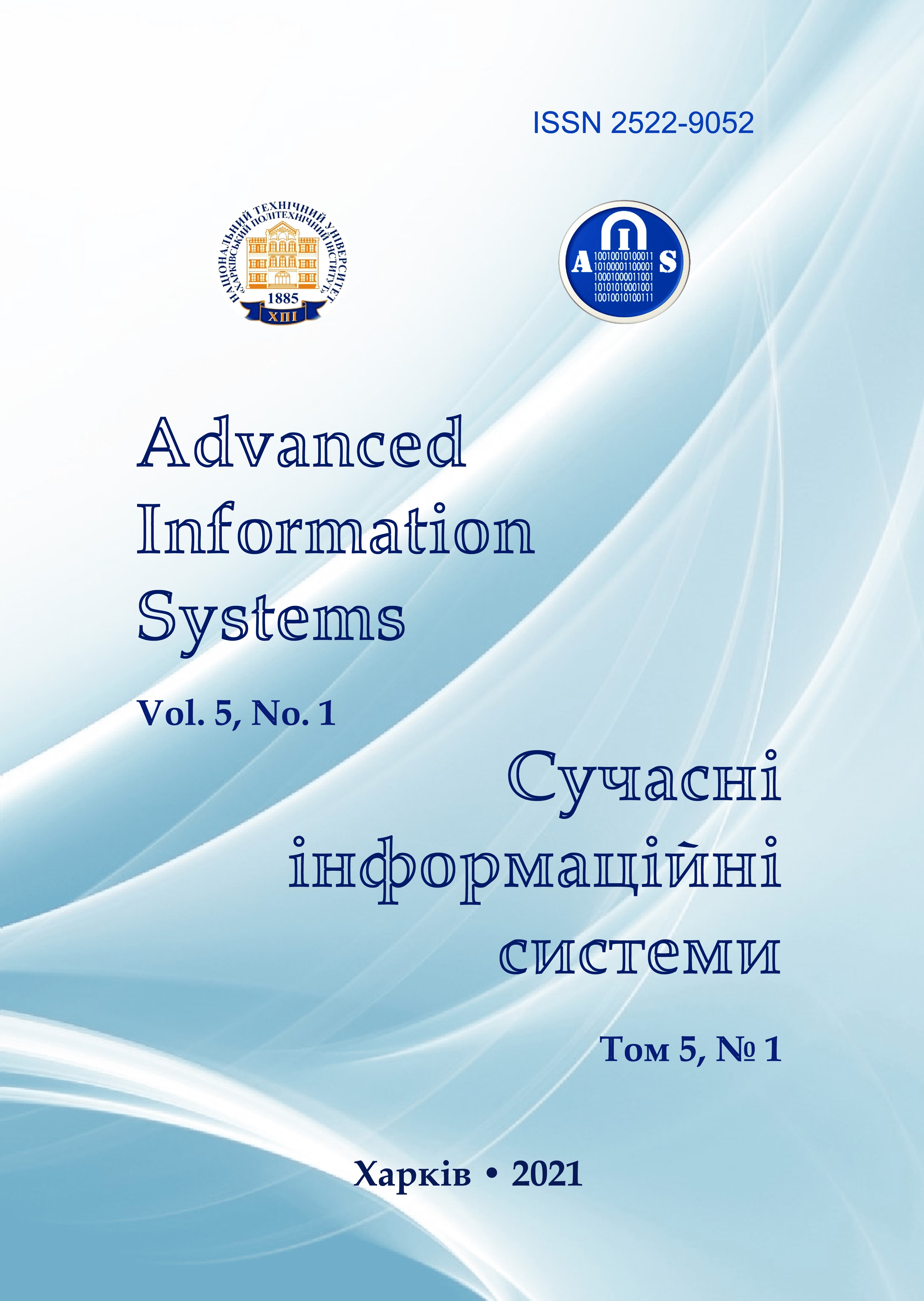A stochastic model of the security system's functional behavior for a critical infrastructure object
Main Article Content
Abstract
Context. Objects of critical infrastructure require adequate security. The security systems for such objects have a specific requirements. Fulfilment of part of these requirements can provide by an unattended ground sensor complex which uses seismic sensors. The second part of the requirements can be performed by an unmanned aircraft complex. Therefore, it is seen as practical feasibility to combine these two complexes in one security system with three control zones. The first (Further) and second (Hither) control zones are served by an unattended ground sensor complex. The third control zone (intruder escort zone) is assigned on the data from the unattended ground sensor complex: the type of intruder, his speed and direction of movement. The unmanned aircraft complex is used to perform a security system task in the intruder's tracking area on command from the unattended ground sensor complex. You need to know two question answers to implement such a security system. First, what is the efficiency indicator value of the security system will ensure the combination of the existing complexes with their functionality indicators. And the second, what should be the functionality indicators requirements of these complexes in order for the security system to provide the required performance indicator value. Objective. Therefore, the goal of the article is to show the potential value of the efficiency index of the security system formed from the existing complexes, as well as to assess the possibility of increasing its efficiency. Methods. This goal is achieved by the stochastic model of functional behavior, which should reproduce all variants of the security system components reaction to the crossing of three control zones by intruders. Results. The main result is a discrete-continuous stochastic model of the functional behavior of the critical infrastructure object security system in the form of 76 Kolmogorov-Chapman differential equations system. The grade of the stochastic model adequacy makes it possible, in addition to the analysis tasks of the security system effectiveness, to solve the synthesis tasks of functionality indicators of the complex components that are integrated into the security system. Conclusions. Research was conducted have shown that it is impractical to create a security system based on existing unattended ground sensor complexes and unmanned aircraft systems for critical infrastructure objects because of the unacceptably low system efficiency. Based on the synthesis task solution, the functionality indicators values of the each complex components, in particular those that will provide the required value of the security system efficiency indicator, are presented. The stochastic model of the functional behavior of the security system can be used in the information technology of its design to find compromise solutions between different variants of composition, structure and functional behavior of the security system.
Article Details
References
Garcia, M.L. (2007), Design and evaluation of physical protection systems, Second Edition, Sandia Corporation, USA, 337 p.
(2017), Unmanned systems integrated roadmap 2017–2042, available at:
https://www.defensedaily.com/wp-content/uploads/post_attachment/206477.pdf.
De Garmo, M. (2004), Issues Concerning Integration of Unmanned Aerial Vehicles in Civil Airspace, Center for Advanced Aviation System Development McLean, Virginia, 92 p.
Sleefe, G.E., Peglow, S. & Hamrick R. (1997), “The application of unattended ground sensors to stationary targets, in peace and wartime applications and technical issues for unattended ground sensors”, SPIE, vol. 3081, pp. 21–29.
Mosalev, V. (2000), “Battlefield surveillance systems based on reconnaissance and alarm devices”, ZVO, No. 2, pp. 21–27.
Andrushchenko, V., Syrotenko, P. & Bugrii, V. (2015), Analysis of modern capabilities and perspectives of the technology for seismoacoustic identification of intruder of the protected object perimeter, KNU, Kyiv, Ukraine, pp. 6–12.
(2010), Eyes of the Army. The Army Roadmap for UAS 2010-2035, Army UAS CoE Staff, U. S. Army, 140 p.
Pashhuk, Ju.M. & Salnyk Ju.P. (2015), “Tactical unmanned aerial vehicles: opportunities and limitations in application”, Science and Technology of the Air Force of Ukraine, No. 1(18), pp. 23–28.
Harchenko, V.S., Jastrebeneckij, M.A. & Fesenko G.V. (2017), “NPP post-accident monitoring system using unmanned aerial vehicles: reliability models”, Jaderna ta radіacіjna bezpeka, No. 4 (76), pp. 50–54.
Zvezhinskij, S.S., Ivanov, V.A. & Rudnichenko, V.A. (2008), Classifications, features and information-measuring models of detection tools, Bjuro nauchno-tehnicheskoj informacii, available at: http://www.bnti.ru/showart.asp?aid=869&lvl=19.01.02.
Buslenko N. P. (1978), Complex systems Simulation, Nauka, Moscow, 399 р.
Volochij, B. Ju. (2004), Technology of information systems behavior algorithms modeling, LP, Lviv, 220 р.
Vollmerhausen, R.H. & Jacobs, Ed.(2004), The targeting task performance metric, Technical report, AMSEL-NV-TR-230, Rev. 20, 126 p., available at: https://ntrl.ntis.gov/NTRL/dashboard/searchResults/titleDetail/ADA422493.xhtml.
Volochij, B., Zmysnyj, M. & Onyshhenko, V. (2019), “Possibilities estimation of the security alarm system complex with various quantity of seismic sensors near a control zone”, Systemy ta tehnologii, No. 1 (57), pp. 47–67, DOI: https://doi.org/10.32836/2521-6643-2019-1-57-4.
Salnyk Yu., Volochiy, B. & Onishchenko V. (2020), “Stochastic model of the reaction the unattended ground sensor system based on {3+3} scheme”, Proceedings of 15th International Conference on Advanced Trends in Radioelectronics, Telecommunications and Computer Engineering (TCSET-2020), Lviv-Slavske, Ukraine, February 25–29.2020. Paper ID 148, DOI: https://doi.org/10.1109/TCSET49122.2020.235482.
Salnyk Y., Pashchuk, Yu. & Matala, I. (2013), “Mini-UAV flight and payload automated control system”, Military-technical collection, NASV, No. 2(9), pp. 90–94.
Freeman, P. & Balas, G. (2014), “Actuation failure modes and effects analysis for a small UAV”, American Control Conference, USA, pp. 1292–1297, DOI: https://doi.org/10.1109/ACC.2014.6859482.
Mitrahovich, M.M., Silkov, V.I. & Samkov, A.V. (2012), Unmanned aerial systems: methods of comparative assessment of combat capabilities, CNII VVT VS Ukrainy, Kyiv, 302 р.
